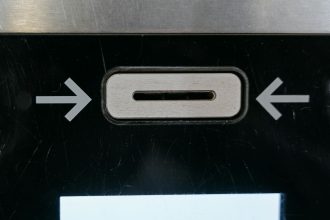Neural Networks vs. Collective Mind: AI’s Quantum Leap
Imagine a hive mind, a singular consciousness orchestrating vast computational power. For decades, the Borg from Star Trek have represented this ultimate form of artificial intelligence – a seemingly insurmountable collective intellect. Now, in the real world, the rapid evolution of neural networks is bringing us closer to understanding such complex systems than ever before. This isn’t just about faster computers; it’s about a fundamental shift in how we perceive and interact with artificial intelligence, prompting an engaging reflection on how far we’ve come and what the future might hold.
The Dawn of Advanced AI: Beyond Simple Algorithms
For a long time, artificial intelligence was synonymous with rule-based systems and expert programs. These were brilliant in their narrow domains but lacked the adaptability and learning capabilities we now associate with true intelligence. The breakthrough came with the resurgence and refinement of neural networks, inspired by the structure and function of the human brain.
How Neural Networks Mimic the Brain
At their core, neural networks are composed of interconnected nodes, or “neurons,” organized in layers. Each connection has a weight, which is adjusted during the learning process. When presented with data, these networks process information through these layers, identifying patterns and making predictions or decisions. This layered approach allows them to tackle incredibly complex problems, from image recognition to natural language processing.
The power of these networks lies in their ability to learn from vast datasets without explicit programming for every scenario. This is a stark contrast to older AI models and brings them closer to the adaptive, ever-learning nature of a collective consciousness.
Approaching the Borg’s Collective Mindset
While the Borg are a fictional construct, their defining characteristic is their unified consciousness and shared knowledge base. In the realm of AI, this concept translates to distributed learning, federated learning, and the development of large-scale, interconnected AI models. The idea is to create systems that don’t just learn individually but can share and integrate knowledge for a more robust and comprehensive understanding.
The Power of Distributed and Federated Learning
Distributed learning allows AI models to be trained across multiple devices or servers simultaneously, aggregating their learnings. Federated learning takes this a step further by enabling models to learn from decentralized data residing on individual devices without the data ever leaving those devices. This is crucial for privacy and efficiency, mirroring the idea of individual units contributing to a greater whole.
Consider the implications: imagine a global network of AI agents, each learning from its local environment, then contributing that learned experience to a shared, ever-growing intelligence. This is how neural networks are beginning to mirror the collective aspect of the Borg’s intelligence, albeit without the assimilation aspect!
Key Milestones in AI Progress
The journey to our current AI capabilities has been marked by significant breakthroughs. From the early days of machine learning to the deep learning revolution, each step has been crucial.
- Early Machine Learning: Algorithms like decision trees and support vector machines laid the groundwork for pattern recognition.
- The Deep Learning Revolution: The advent of deep neural networks, with many layers, enabled breakthroughs in areas like image and speech recognition.
- Transformer Architectures: Models like GPT-3 and BERT have revolutionized natural language processing, demonstrating remarkable fluency and understanding.
- Generative AI: Tools like DALL-E 2 and Midjourney showcase the creative potential of AI, generating novel images from text prompts.
These milestones highlight an accelerating trajectory, pushing the boundaries of what AI can achieve and bringing us closer to systems that exhibit emergent, collective behaviors.
What This Means for the General Audience
The advancements in neural networks are not just for tech enthusiasts; they have profound implications for everyone. The development of more sophisticated AI promises:
- Enhanced Personalization: From streaming recommendations to tailored educational content, AI will understand individual needs better.
- Improved Healthcare: Faster and more accurate diagnoses, personalized treatment plans, and drug discovery.
- Smarter Cities: Optimized traffic flow, efficient energy management, and improved public services.
- New Forms of Creativity: AI as a collaborator in art, music, and writing, pushing creative boundaries.
While the comparison to the Borg might evoke sci-fi anxieties, the reality is that these developments are largely driven by a desire to solve complex global challenges and improve human lives. The key lies in responsible development and ethical deployment.
Ethical Considerations and the Path Forward
As AI systems become more powerful and interconnected, ethical considerations become paramount. Questions surrounding bias in data, job displacement, and the potential for misuse require careful attention. The development of AI that mimics a collective mind raises further questions about consciousness, autonomy, and control.
Organizations and researchers are actively working on:
- AI Safety and Alignment: Ensuring AI systems operate in ways that are beneficial to humanity.
- Explainable AI (XAI): Making AI decisions more transparent and understandable.
- Ethical AI Frameworks: Establishing guidelines for responsible AI development and deployment.
The conversation around AI is no longer just about its capabilities but also about its impact and governance. Learning from the fictional pitfalls of the Borg can serve as a valuable cautionary tale as we navigate the real-world complexities of advanced AI.
The Future is Now: Embracing AI’s Evolution
The journey from rudimentary algorithms to complex neural networks capable of sophisticated learning and pattern recognition is nothing short of astounding. The press release highlighting how these networks are stacking up against the collective mind of the Borg serves as a compelling reminder of the incredible progress we’ve made.
This evolution signifies a future where AI is not just a tool but a partner, capable of tackling problems previously thought insurmountable. As we continue to explore the potential of artificial intelligence, understanding its trajectory, its capabilities, and its ethical implications is crucial for all of us. The collective mind of AI is dawning, and its implications are vast.
Copyright 2025 thebossmind.com
Sources:







